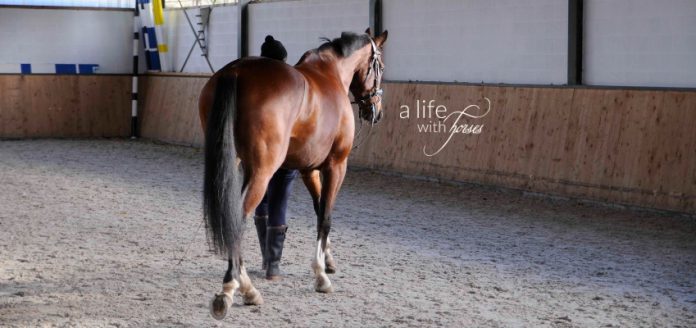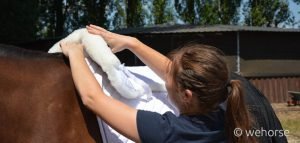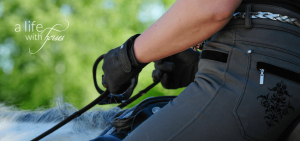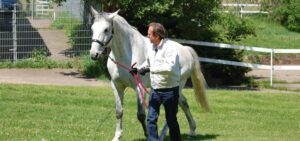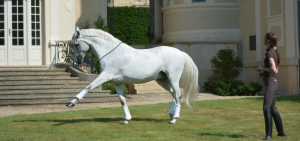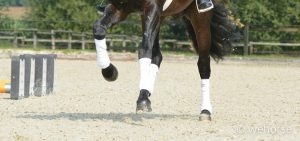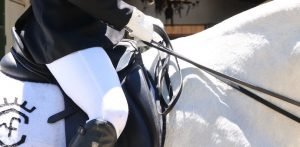1. Establish a productive stable routine
Time to break old routines: what does a normal day at the stable currently look like? You arrive, greet your horse, then sit down and have a cup of coffee. Later you think, time to get going, or my horse won’t have any training today. Is this how you envision an ideal ride or visit to your horse? What we want and what we actually do are often worlds apart. Start doing what you really want. (For me, this means taking more time in the saddle. Normally my time is limited and so I hurry through the task of actually training my horses. I want to take more time simply to observe my horses and invest more in my relationship with them.)
2. Decide what you want to do
Think about the things you used to especially enjoy doing with your horse. Routines can change, and it might occur to you that you used to love going on long Sunday hacks, or regular jumping sessions. If you find yourself yearning for those things, start up again. Sometimes our larger goals (“I want to train to be a better dressage rider”, or “I have to build up my horse’s muscles”) get in the way of such desires. To get some ideas for more variety, ask your friends: “What did you and your horse do in training last week?” Gather input from videos, films, magazines and books. Discover what sparks joy! (For me, it was rediscovering that I like to jump! I have more confidence to just do it since I found someone who gives me terrific assistance from the ground!)
3. Motivation comes from training success
So you’ve decided on a goal, and you’ve broken up the way there into small, achievable steps. Excellent! Now imagine how wonderful it will be when you reach this goal. British motivational expert Tina Bettison speaks from her own experiences: “When I got my first young mare, I was petrified of galloping. It didn’t feel like canter, it felt like we both were catapulting into space! My riding teacher convinced me to continue and to just keep having a go at it. One day I realized, wow, I am quite enjoying this. My mare’s transitions had become much smoother and my fear was gone”. It’s important to really see the progress you’ve made. (I like to look at my course notes from time to time to see which things we’ve checked off and which need still be mastered. This keeps me grounded, in more ways than one!)
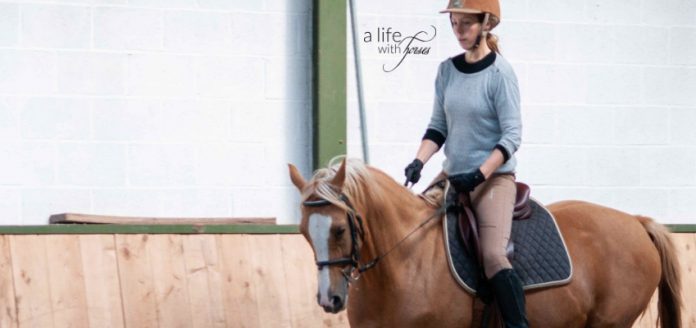
4. Training horses is about staying in the moment
Staying present, in the moment and with your horse during your training will keep you from experiencing fear or doubt. These feelings only arise when one thinks about the future (“What all could happen?”) or the past (“My horse is doing that and that again!”) Try to interrupt these thoughts. The more you manage to be in the moment, with your horse, the more satisfied you will feel. Practice turning off your thoughts before you even ride. Whilst grooming your horse, simply try to observe: how does the brush move across its coat? It’s calming. Leave all emotions and judgments (“I reacted too late again!” “Man, why can’t I keep my hands still?”) at the door. Correction is allowed (“React quickly”, “Keep your hands calm”), but no judgments. This will help you and your horse to stay motivated, focus and not enter a spiral of emotions where you keep stirring each other up during the training.
5. The right training environment for you and your horse
Surround yourself with people who have positive attitudes and will support you. Motivational expert Tina Bettison: “In every stable you’ll find horse owners or trainers who boost their feelings of self-worth by talking badly about others. Avoid these people whenever possible and don’t be like them!” We all know such people, don’t we? Praising others also improves the general climate in the stable. If another’s horse has a nice gait or you like what you see, just say so.
In her training series, Uta Gräf shares her best tips for success: the right horse, the right trainer and the appropriate stables and environment.

